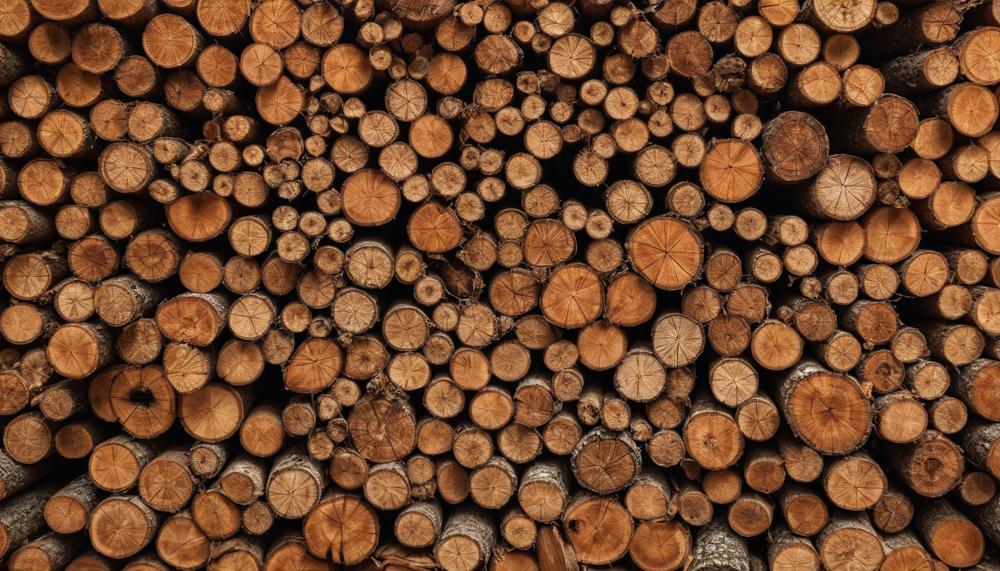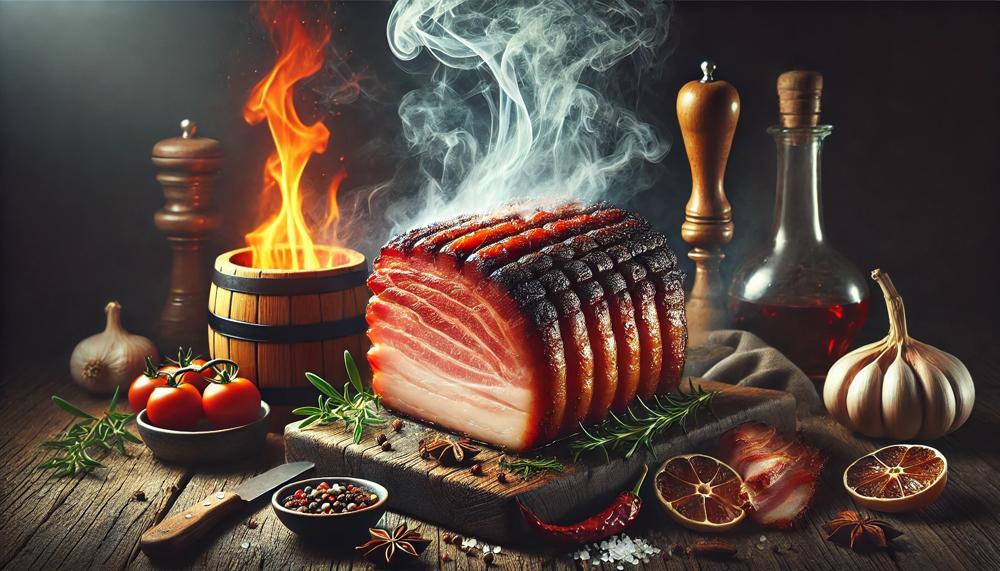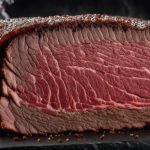When it comes to smoking meat or fish, the choice of wood can make all the difference between good and exceptional flavors. Selecting the right wood is crucial for achieving that perfect balance of smokiness and aroma in your culinary creations.
Let’s delve into the optimal woods for smoking and why they stand out:
- Hickory: Known for its robust flavor, hickory is a favorite for smoking pork and beef. It delivers a strong, hearty smoke that complements rich meats.
- Apple: This wood offers a mild and sweet flavor, making it ideal for poultry, pork, and even vegetables. It adds a fruity undertone without overpowering delicate meats.
- Mesquite: Popular in southwestern cooking, mesquite provides a bold, tangy flavor. It works well with beef, particularly in shorter smoking times due to its intensity.
- Cherry: With a sweet and mild profile, cherry wood is versatile, enhancing the flavor of poultry, pork, and even seafood with a subtle fruity essence.
- Oak: Offering a medium smoke intensity, oak is excellent for longer smoking durations. It pairs well with almost any meat, imparting a robust and earthy flavor.
Choosing the right wood depends on the type of meat and the intensity of flavor you desire. Experimentation is key to finding your perfect combination.
Whether you’re a seasoned pitmaster or a novice enthusiast, understanding these nuances can elevate your smoking experience to new heights.
Discover the world of smoking woods and unlock a realm of flavor possibilities for your next barbecue adventure.
Contents
- 1 What Woods Are Best To Smoke With?
- 2 Mesquite: A Bold and Flavorful Wood for Smoking
- 3 Applewood: Adding a Sweet and Fruity Note to Your BBQ
- 4 Hickory: A Classic Choice for Rich and Smoky Flavors
- 5 Cherry Wood: Enhancing Your Meat with a Mild and Fruity Taste
- 6 Oak: Providing a Strong and Robust Flavor Profile to Your BBQ
- 7 Pecan Wood: Adding a Nutty and Slightly Sweet Undertone to Your Smoke
- 8 Conclusion
What Woods Are Best To Smoke With?
| Wood Type | Flavor Profile | Best Used With |
| Hickory | Strong, smoky, bacon-like | Pork (ribs, shoulders), beef, game meats |
| Mesquite | Strong, earthy, spicy | Beef (brisket, steaks), game meats |
| Apple | Sweet, mild, fruity | Poultry, pork, game birds |
| Cherry | Sweet, mild, fruity | Poultry, pork, lamb |
| Oak | Mild, with a medium smoke | Almost all meats, particularly beef and lamb |
The best woods for smoking depend on the flavour profile you want to achieve and the type of meat you’re cooking. Hickory is excellent for a strong, bacon-like flavour that complements pork and beef. Mesquite offers a robust, earthy taste ideal for beef and game meats.
For a sweeter profile, Apple and Cherry woods add fruity notes that pair well with poultry and pork. Oak, with its medium smoke intensity, is versatile and works well with most meats, especially beef and lamb.
Mesquite: A Bold and Flavorful Wood for Smoking
Mesquite wood is renowned for its intense, robust flavor that makes it a prime choice for smoking. It’s the boldness of the flavor profile, defined by a deep earthiness with hints of sweetness and tang, that sets mesquite apart.
This distinctive taste is the result of the dense, hardwood structure of mesquite, which burns hotter and faster compared to softer smoking woods like apple or cherry. Here’s a breakdown of what contributes to mesquite’s bold and flavorful smoking characteristics:
- High Heat Burn: Mesquite burns at a higher temperature, imbuing the meat with a smoky flavor more rapidly and creating a crisped exterior that’s packed with flavor.
- Distinctive Flavor Notes: The unique combination of earthy tones, complemented by subtle sweetness and a tangy edge, makes mesquite ideal for enhancing the natural flavors of red meats and game.
- Efficiency in Smoking: Due to its density, mesquite imparts its flavor quickly, making it perfect for shorter smoking sessions.
Applewood: Adding a Sweet and Fruity Note to Your BBQ
Applewood brings a unique and delightful flavour profile to BBQ dishes, characterised by a mild sweetness and a subtle fruity undertone. This distinctive flavour is gentle and does not overpower the natural tastes of the meat, making it an excellent choice for those who prefer a more nuanced smoky taste.
Applewood is particularly known for its versatility in barbecuing, blending harmoniously with a variety of meats. Here are the key aspects of applewood’s flavour profile:
Mild Sweetness: Applewood’s mild sweetness elevates the taste of meats like chicken and pork, adding a pleasant layer of flavour without masking their inherent qualities. This makes applewood a favourite among grill enthusiasts who appreciate a balanced taste.
Fruity Undertone: The fruity notes from applewood introduce a subtle yet noticeable dimension to BBQ dishes. This fruity hint is especially compatible with lighter meats and seafood, providing a refreshing contrast to richer flavours.
Light Smokiness: Applewood’s smoke is light and clean, making it suitable for longer smoking sessions without causing bitterness. This characteristic is ideal for smoking sausages, vegetables, and even cheeses, where a gentle smokiness is desired.
Hickory: A Classic Choice for Rich and Smoky Flavors
Its unique characteristics include:
- Strong and Distinct Flavor: Hickory offers a potent, sweet, nutty, and slightly spicy taste. This rich profile complements meats like pork, beef, and chicken, making it a versatile choice for different barbecue styles.
- Versatility: Hickory’s strong flavor can stand alone or be mixed with other woods such as applewood or mesquite to create complex and delightful flavor combinations.
- Good Smoke Production: Hickory burns consistently, producing thick smoke that penetrates the meat deeply, enhancing its texture with crispy edges and juicy interiors.
- Heat Consistency: Ideal for slow-cooking, hickory provides stable heat, which is essential for achieving tender and flavorful results in meats that require longer smoking times.
- Pairing with Various Cuisines: Beyond traditional barbecues, hickory pairs well with numerous cuisines, making it a versatile choice for global culinary applications.
- Different Types of Hickory: Varieties like shagbark or pecan offer unique flavors suited for different meats, adding further to its versatility. For instance, shagbark is excellent for beef, while pecan complements poultry perfectly.
Cherry Wood: Enhancing Your Meat with a Mild and Fruity Taste
| Characteristic | Description | Benefits |
| Mild and Fruity Flavor | Cherry wood offers a delicate, fruity taste with subtle sweetness, imparting a gentle smokiness to meat. | Enhances meat without overpowering natural flavors, perfect for lighter meats like poultry and pork. |
| Aromatic Smoke | Produces a light, pleasant smoke that doesn’t overwhelm the meat, contributing to a nuanced flavor profile. | Allows for gradual smoke infusion, ideal for achieving balanced, mild smokiness. |
| Consistent Burn | Burns evenly and steadily, maintaining a stable temperature for slow cooking without fluctuations. | Ensures meat is cooked evenly and tenderly throughout the smoking process. |
| Versatility | Compatible with a variety of meats, including poultry, pork, and fish, enhancing their natural flavors. | Provides flexibility in culinary applications, from grilling to barbecuing. |
| Beautiful Color | Imparts a rich mahogany hue to meats, enhancing their visual appeal. | Creates an appetizing presentation, adding to the overall dining experience. |
Cherry wood stands out for its ability to delicately enhance the flavour of meat with a mild and fruity essence. Its gentle smokiness and consistent burn make it ideal for meats like poultry and pork, ensuring a tender and flavourful outcome. This wood’s aromatic smoke, versatility across different meats, and the beautiful colour it adds to dishes further elevate its appeal in culinary applications.

Oak: Providing a Strong and Robust Flavor Profile to Your BBQ
Oak wood stands out as a superior choice for smoking BBQ due to its dense, slow-burning nature, which ensures a steady release of smoke, ideal for long grilling sessions. This consistent smoke infusion creates a robust flavor profile characterized by a perfect blend of smoky sweetness and subtle hints of maple, enhancing the natural flavors of the meat without overshadowing them. Here’s how oak contributes to BBQ:
- Consistent Smoke Output: Oak’s density allows it to burn slowly and steadily, providing a uniform smoke that is essential for cooking meat thoroughly and infusing it with flavor.
- Balanced Flavor Enhancement: Unlike other woods that might overpower, oak offers a balanced smokiness, sweetened slightly by undercurrents akin to maple syrup, which enriches the taste of various meats.
- Versatility in Use: Available in forms such as chips, chunks, and logs, oak is adaptable for different smoking techniques, whether you’re grilling brisket, ribs, salmon, or poultry.
- Depth and Complexity: The smoke from oak wood penetrates the meat, adding complexity and depth to its flavor, elevating ordinary BBQ to gourmet standards.
Here’s a comparative overview of how oak enhances different types of meats:
| Meat Type | Flavor Contribution of Oak | Recommended Oak Type |
| Beef Brisket | Rich, smoky depth, with sweet undertones | Post Oak |
| Pork Ribs | Subtle sweetness with a smoky finish | Red Oak |
| Salmon | Light smokiness, enhancing the fish’s natural flavors | Live Oak |
| Poultry | Gentle smoke that complements without overpowering | Post Oak |
In conclusion, oak’s unique properties make it a popular and effective choice for BBQ enthusiasts seeking to achieve a strong, yet balanced flavor profile in their grilled dishes.
Pecan Wood: Adding a Nutty and Slightly Sweet Undertone to Your Smoke
Pecan wood imparts a distinctive, mild sweetness with a nutty finish that subtly enhances the flavor profile of smoked meats.
Its gentle smoke infuses the food with a unique, not overpowering aroma that’s particularly well-suited to delicate proteins like chicken and fish, as well as red meats.
Unique Flavors of Pecan Wood:
| Flavor Note | Description | Best Used For |
| Nutty | Introduces a soft, almond-like flavor that complements both meat and vegetables. | Chicken, pork ribs |
| Slightly Sweet | Delivers a subtle sweetness, enhancing the natural flavors without overpowering. | Salmon, brisket |
| Smooth Smokiness | Offers a cleaner and smoother smoke compared to heavier woods like hickory. | Delicate fish, vegetables |
Conclusion
Choosing the best wood for smoking meats is an art that significantly influences the culinary results of your barbecue.
Each type of wood imparts a unique flavor, making the selection process key to crafting the perfect smoked dish. For robust, smoky flavors, hickory stands out as the traditional choice, ideal for pork and beef with its hearty smoke profile.
If subtlety is your preference, applewood’s mild sweetness and fruity undertones enhance lighter meats like poultry without overpowering their natural flavors. Mesquite, with its intense, earthy tang, excels in quick smoking sessions, particularly with beef, adding a bold, distinctive character.
Cherry wood offers a sweet, mild flavor that complements not just pork and poultry but also seafood, adding a gentle fruity essence. Oak, known for its medium intensity, is exceptionally versatile and suits almost any meat, supporting longer smoking sessions with its steady, robust smoke.
This tailored approach not only elevates the taste but also personalizes the smoking experience, turning each barbecue into a bespoke flavor journey.






